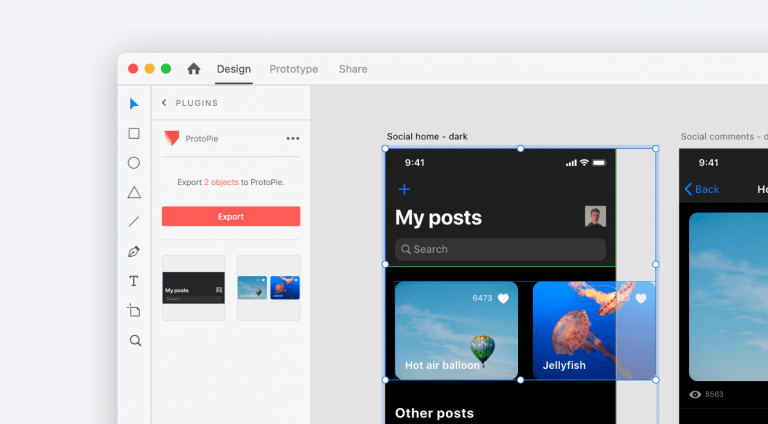
When it comes to creating the most advanced prototypes, designers and developers have far too many tools to choose from these days.
PROTOPIE PRICE CODE
With a whole range of features and the biggest bonus being no code needed to create the prototypes, this sure is a handy tool to create almost production ready ideas to share with clients and stakeholders easily before the project heads for development. You can also check out the ‘Variables Examples’ project in Spaces.ProtoPie sure is one of the best tools currently available in the market to satisfy prototyping needs for designers and developers. Setting a new variable ‘full_name’ to value that results from merging ‘first_name’ and ‘last_name’ separated by SPACE.Ĭhanging a text property according to ‘full_name’įor more information, you can check out our " Introduction to Variables" video tutorial and our " Using Variables for Advanced Prototyping" webinar. Setting variable ‘last_name’ to what the user entered Setting variable ‘first_name’ to what the user entered UI with two text input fields and a button The data the user enters is kept in two dedicated variables (‘first_name’ and ‘last_name’ respectively). Then these are brought together to create variable ‘full_name’ in order to later customize a text message. You have two text input fields on your User Interface, one for Firstname and one for Lastname.

This will return the first character of the variable This will return the characters after the "|" This will return the characters before the "|" Get the first letter of a string Capitalised New Date(new Date().getFullYear(), new Date().getMonth(), new Date().getDate() + 10).toLocaleDateString('en-US')ĭate in Ten days from today in format mm/dd/yyyy New Date(new Date().getFullYear(), new Date().getMonth(), new Date().getDate() + 1).toLocaleDateString('en-US') IF var1 is 1 AND var2 is 1 THEN value is 1 ELSE value is 0 Set a variable that can be later used to change the State of a Container You can also refer to other variables using their names in curly braces, e.g. You can specify a value or a mathematical expression that will be evaluated. Screenshot of the Properties Inspector (Interactions tab), where a variable ‘likebuttonclicked’ is given the value “1” when the user clicks on the button. The Callback option in this Modal lets you define another interaction that will be executed after the main one is completed. You then choose the variable to which you want to assign a value to. your button) and in the Interaction Modal, you select “Set variable…” as the preferred action. To do that, you select your item containing the interaction (e.g. When you copy screens/containers between projects, then the variables that are used are copied as well.Īfter you create your variables you can give them values upon different events such as the user performing some sort of interaction e.g.

Manipulating variable values dynamically (throughout the course of the prototype’s play) advances your prototype’s interaction by making it react to events based on conditional logic in a simple and straightforward way.

The ‘Evaluate’ option (seen in the image below) is needed if the variable’s value is given through an expression (see Advanced section below), in order to evaluate it before it’s used. More specifically, once your variable is created, you can assign a value either upon creation (via Variable Manager), or at any other point in your prototype (through the Interaction Modal -> Set Variable) and then be able to read that value by referring to that variable. Variables are used whenever a value must be stored so that it can affect the User Interface in some way at some point. Variable types can be numeric, text, or boolean. Variables can only hold one value at a time and you can optionally give them initial values upon definition. Variables' names have to be unique, using alphanumeric characters, and should ideally reflect the variable’s purpose. Variables are managed within the Editor under “Variables Manager”. Variables are global within your project, meaning that you can use them throughout your prototype. For example, you can store the contents of an input box in a variable, and later set the text of a label using the value of that variable. In Proto.io, “variables” is a mechanism with which you can store and reuse user-defined values (numbers, text etc).


 0 kommentar(er)
0 kommentar(er)
